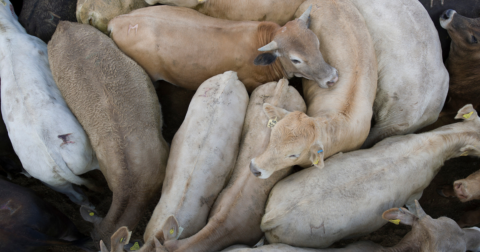Explainer
Agriculture Affects Deforestation Much More Than Most People Realize
Climate•7 min read
Conversations
Watch four reporters from Inside Climate News discuss what we know — and don’t know — about pollution from industrial animal agriculture.


Words by Georgina Gustin, Inside Climate News
This article originally appeared on Inside Climate News, a nonprofit, non-partisan news organization that covers climate, energy and the environment. Sign up for their newsletter here.
Most of the meat we eat in the United States isn’t raised on small farms or fenced fields, as it was decades ago. Today it comes from large concentrated animal feeding operations, also known as CAFOs. These industrial facilities house thousands of animals in close quarters—generating tremendous amounts of manure, climate-polluting methane and a host of issues for neighbors.
Managing editor Jamie Smith Hopkins sits down with four ICN journalists who have reported on CAFOs: Georgina Gustin, who covers agriculture and the many ways that farming, food systems and the environment intersect; Lisa Sorg, who covers North Carolina, one of the nation’s top hog producers; Phil McKenna, who reports on climate superpollutants like methane; and Anika Jane Beamer, who covers Iowa, where manure from CAFOs contributes to a long-running and far-reaching water contamination problem.
Watch as they explain what we know—and don’t know—about CAFOs, the scale of the pollution they cause, what it’s like to live near one of these facilities, and whether elected officials and policymakers are doing anything about them.